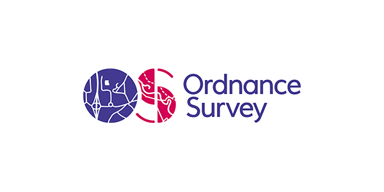ONS making the most of location data to support the public good
ONS was joined by an Ordnance Survey (OS) data architect, helping to upskill the teams. ONS data architect and geographers are now more confident in using geospatial data and analysis, and have identified a time-saving automation opportunity in the OS National Geographic Database (OS NGD). ONS is also able to support government teams, benefiting the public at large.
"The OS data architect brought us huge value. The secondment enabled us to bring in additional and specialised geospatial expertise for a significant amount of time, enough to both deliver on projects and help to review our workflows, as well as the connection between the Data Architecture and Geospatial branches. It's helped us understand how we can enhance the synergy between the two teams, as well as better showing the value and importance of geospatial data and tooling to the end to end data journey in ONS."
ONS is building an Integrated Data Service (IDS), providing the government with secure access to high quality data, enabling faster and wider collaborative analysis for public benefit. The IDS involves linking disparate datasets together to optimise the use of geospatial data. ONS therefore needed to enhance its capability for linking third party data to a location. ONS has been strengthening its location index capability with OS, bringing together address and geography indexing, including hard-to-find unaddressed locations.
OS has also provided mentoring and coaching to support self-learning beyond the project, to leave a legacy of shared learning, strengthening the two organisations’ relationship.
"Geospatial data architecture is a very specialised skillset. The OS Cadre gave us the opportunity to leverage OS’s expertise to upskill our geographers and data architects, with the benefit of bridging the gap between the teams. Acting as a critical friend, the cadre left a clear and tangible legacy with recommendations which we are now implementing to support a more efficient location indexing approach."
The project delivered four key outputs: an upskilled workforce, automation opportunities, product enhancement, and a greater working relationship between the two organisations.
- ONS is more confident in dealing with geospatial data and metadata, mapping out issues that can be dealt across geospatial and data architecture teams, aligned to QFAIR principles.
- The in-house ‘Introduction to geospatial’ training package for ONS Data Engineers and Data Architects has been improved drawing on the specificities of geospatial data architecture and including specialised documentation to support self-learning, specifically, with regards to data architecture practices to handle spatio-temporal changes.
- Two ONS Data Architects were upskilled in geospatial knowledge, through mentoring and coaching. This has enabled a closer working relationship between ONS Geography and Data Architecture teams to influence geospatial requirements.
- A paper highlighting opportunities and recommendations around the benefits of migration from AddressBase to OS NGD was delivered for the Location Index. This is supporting existing plans for automating data ingestion.
- The ONS Location Index product has benefited from peer-review and now incorporating the recommendations on spatial indexing and the use of a gridded approach.
- The relationship between OS and ONS has been improved with greater understanding of respective organisational products and priorities. This has enabled the identification of overlaps and opportunities to streamline the work on geography boundaries from both organisation and to support ongoing ambition for closer data alignment between statistics and geography.
ONS access OS data and expertise as a Public Sector Geospatial Agreement (PSGA) member and is benefiting from the OS NGD.
What is the OS NGD?
The OS NGD is a single store of all Ordnance Survey’s authoritative data for Great Britain. The OS NGD delivers the richer data you need for better analysis and our download service, OS Select+Build, makes it easier to find, package and analyse the data you need, such as address and building data for emergency planning.

Our highly accurate geospatial data and printed maps help individuals, governments and companies to understand the world, both in Britain and overseas.